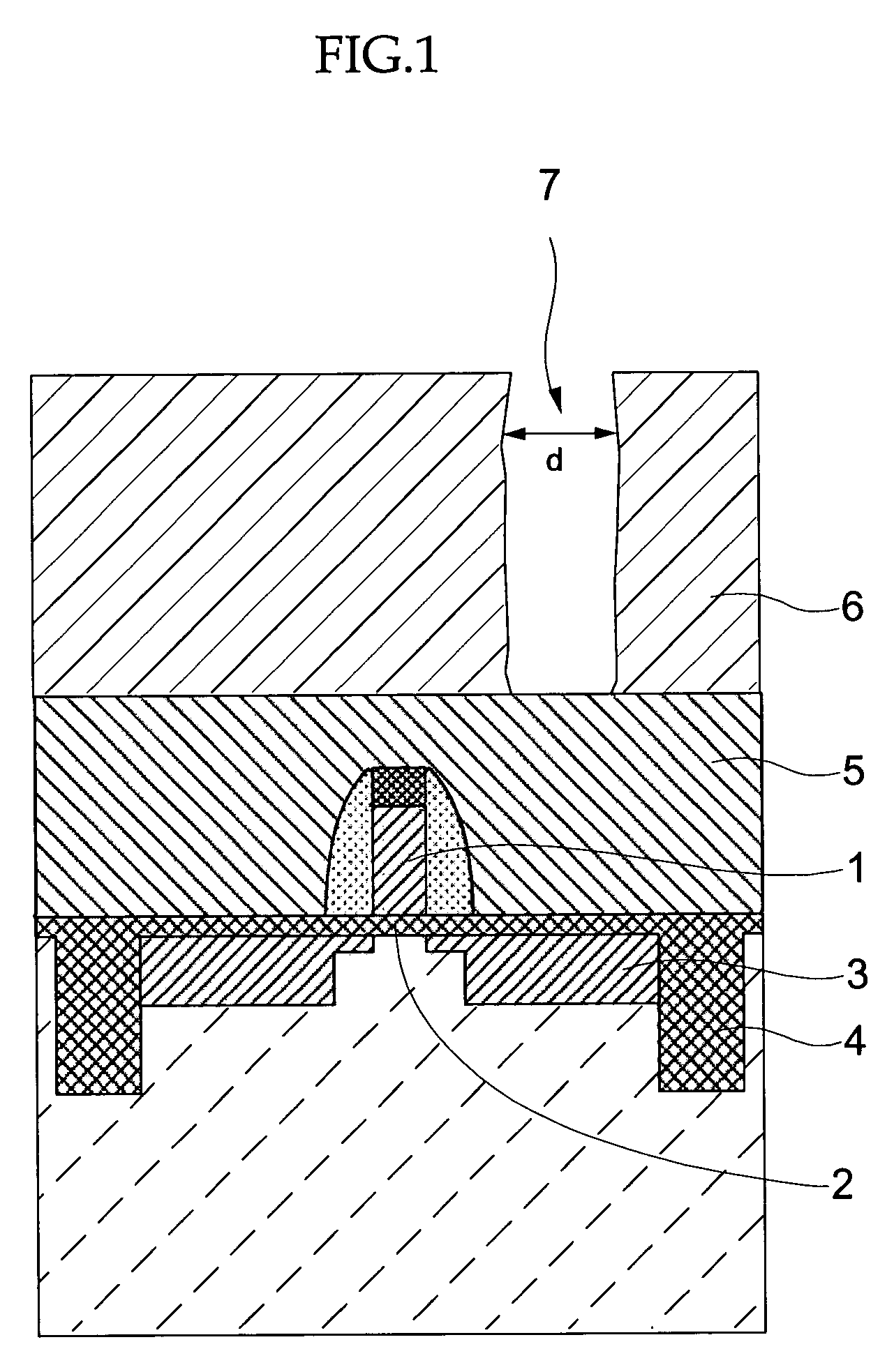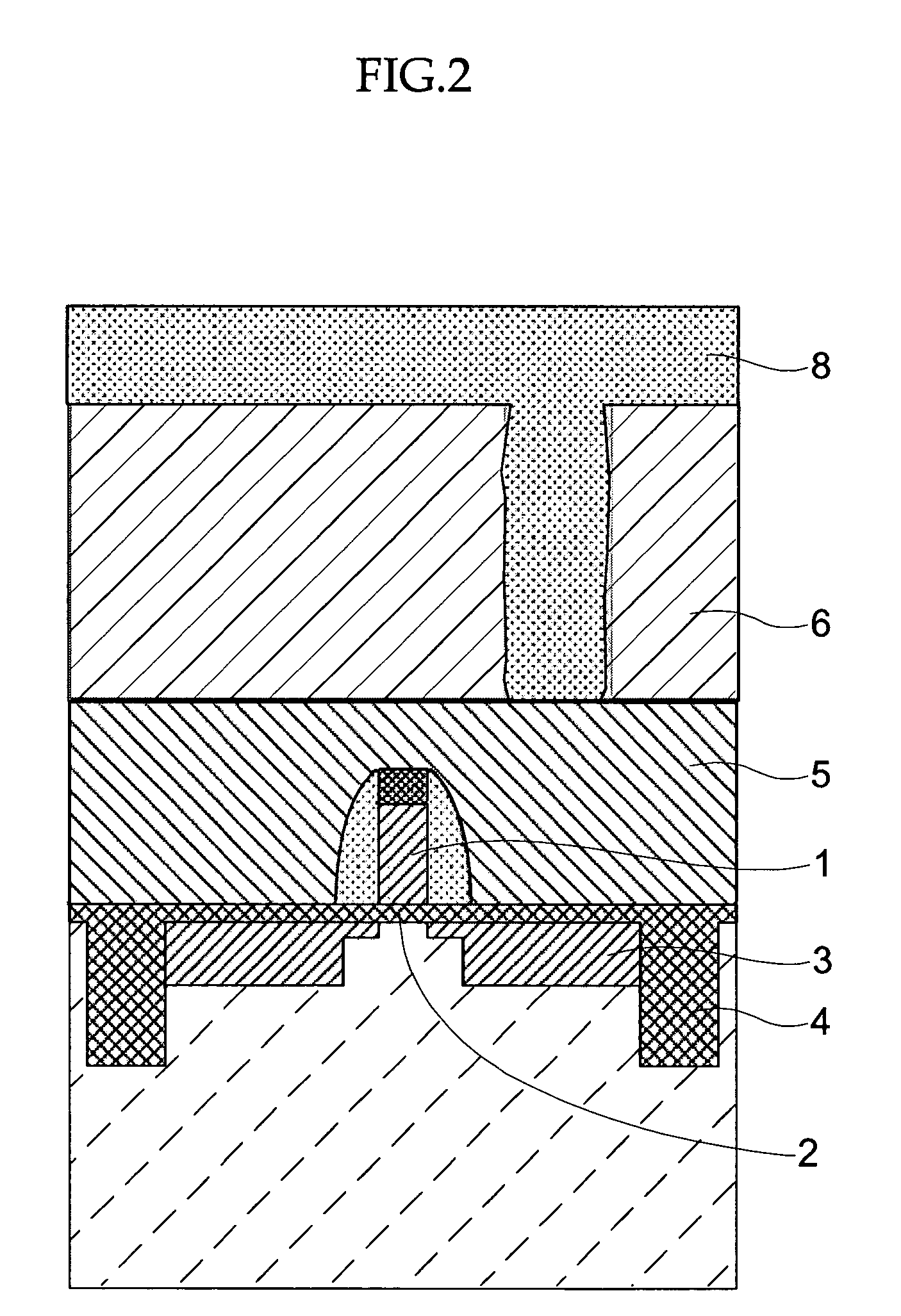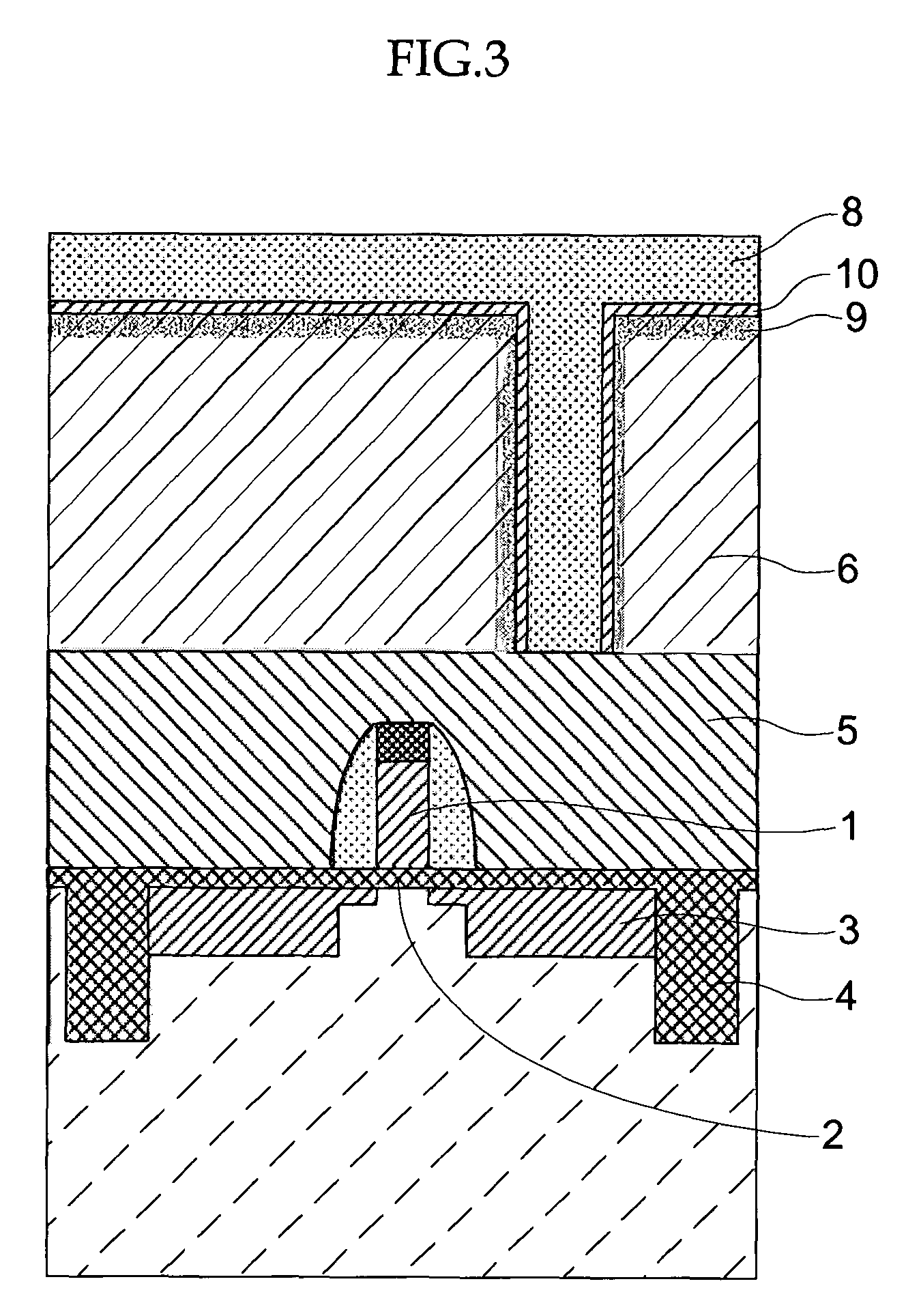Method of manufacturing semiconductor device, and method of forming resist pattern
- Summary
- Abstract
- Description
- Claims
- Application Information
AI Technical Summary
Benefits of technology
Problems solved by technology
Method used
Image
Examples
example 1
[0122]An ArF resist was applied onto a silicon wafer (a base layer). Selective exposure was carried out by using an ArF exposure device and developing was carried out, so as to form a resist pattern (hole pattern) (opening dimension=100 nm).
[0123]Next, a resist pattern smoothing material having the following composition was applied onto the surface of the resist pattern. Namely, the resist pattern smoothing material contained 16 parts by mass of polyvinyl acetal resin (KW-3, manufactured by Sekisui Chemical Co., Ltd.) as the resin, 1.16 parts by mass of tetramethoxymethyl glycol uril (manufactured by Sekisui Chemical Co., Ltd.) as the crosslinking agent, and 0.25 parts by mass of a polyoxyethylene monoalkylether surfactant (TN-80, a non-ionic surfactant manufactured by Asahi Denka Co., Ltd.) as the surfactant. Further, a mixed liquid of pure water (deionized water) and isopropyl alcohol (whose mass ratio was pure water (deionized water):isopropyl alcohol=98.6:0.4) was used as the ma...
example 2
[0133]A smoothed resist pattern was formed in the same way as in Example 1 except that the temperature for heating was made to be 90° C., the time for heating was made to be 60 seconds, and the application thickness of the resist pattern smoothing material was varied as shown in Table 2. The same evaluations as in Example 1 were carried out. The results are shown in Table 2.
[0134]
TABLE 2amount of variation inApplication thicknesssize (nm)edge roughness (nm)50 nm08.7 nm83 nm−23.7 nm98 nm−124.1 nm155 nm crosslinked over entire—surface
[0135]When the application thickness were 50 nm, 83 nm, 98 nm, 155 nm and the temperature for heating was 90° C. and the time for heating was 60 seconds, as compared with the cases in which the application thickness were 50 nm, 98 nm and 155 nm, in the case in which the application thickness was 83 nm, the amount of variation in the pattern size could be kept to within a range of ±10% (−2 nm) (i.e., Dav. (nm)≧D (nm)×(90 / 100) was satisfied), and the edge r...
example 3
[0136]A smoothed resist pattern was formed in the same way as in Example 1 except that the predetermined opening dimensions of the resist patterns were made to be 120 nm and 150 nm, the temperatures for heating were as shown in Table 3 (for opening dimension=120 nm) and Table 4 (for opening dimension=150 nm), the time for heating was 60 seconds, and the application thickness of the resist pattern smoothing material was 80 nm. The same evaluations as in Example 1 were carried out. The results are shown in Tables 3 and 4 and in FIG. 5.
[0137]
TABLE 3temperature foramount of variation inheating (baking)size (nm)edge roughness (nm) 80° C.−16.4 85° C.14.4 90° C.54.8 95° C.43.4100° C.173.9105° C.182.8110° C.253.1120° C.crosslinked over entirecrosslinked over entiresurfacesurface
[0138]
TABLE 4temperature foramount of variation inheating (baking)size (nm)edge roughness (nm)80° C.45.185° C.64.190° C.84.195° C.84.6100° C.203.2105° C.343.2110° C.373.3120° C.crosslinked over entirecrosslinked over...
PUM
 Login to View More
Login to View More Abstract
Description
Claims
Application Information
 Login to View More
Login to View More - R&D
- Intellectual Property
- Life Sciences
- Materials
- Tech Scout
- Unparalleled Data Quality
- Higher Quality Content
- 60% Fewer Hallucinations
Browse by: Latest US Patents, China's latest patents, Technical Efficacy Thesaurus, Application Domain, Technology Topic, Popular Technical Reports.
© 2025 PatSnap. All rights reserved.Legal|Privacy policy|Modern Slavery Act Transparency Statement|Sitemap|About US| Contact US: help@patsnap.com



